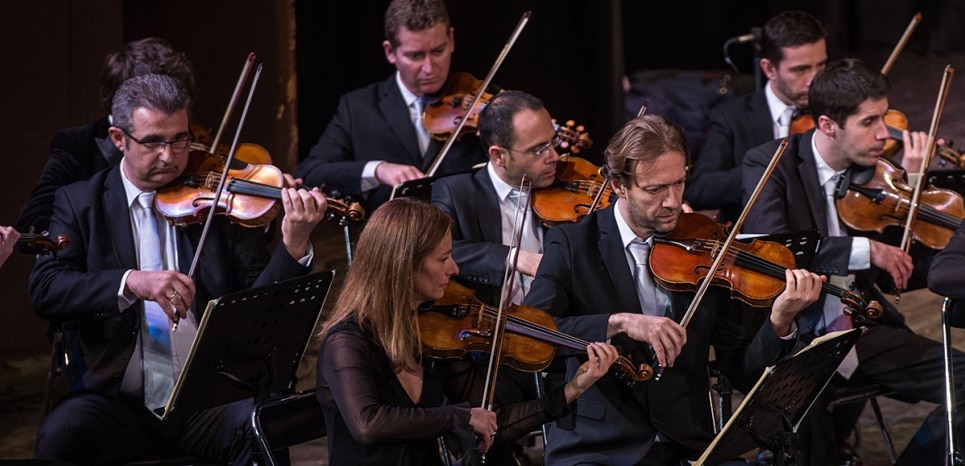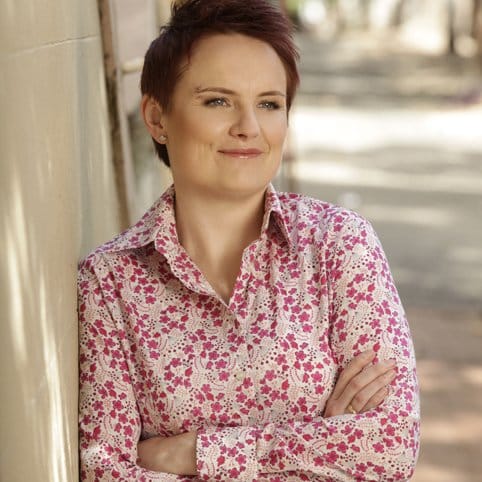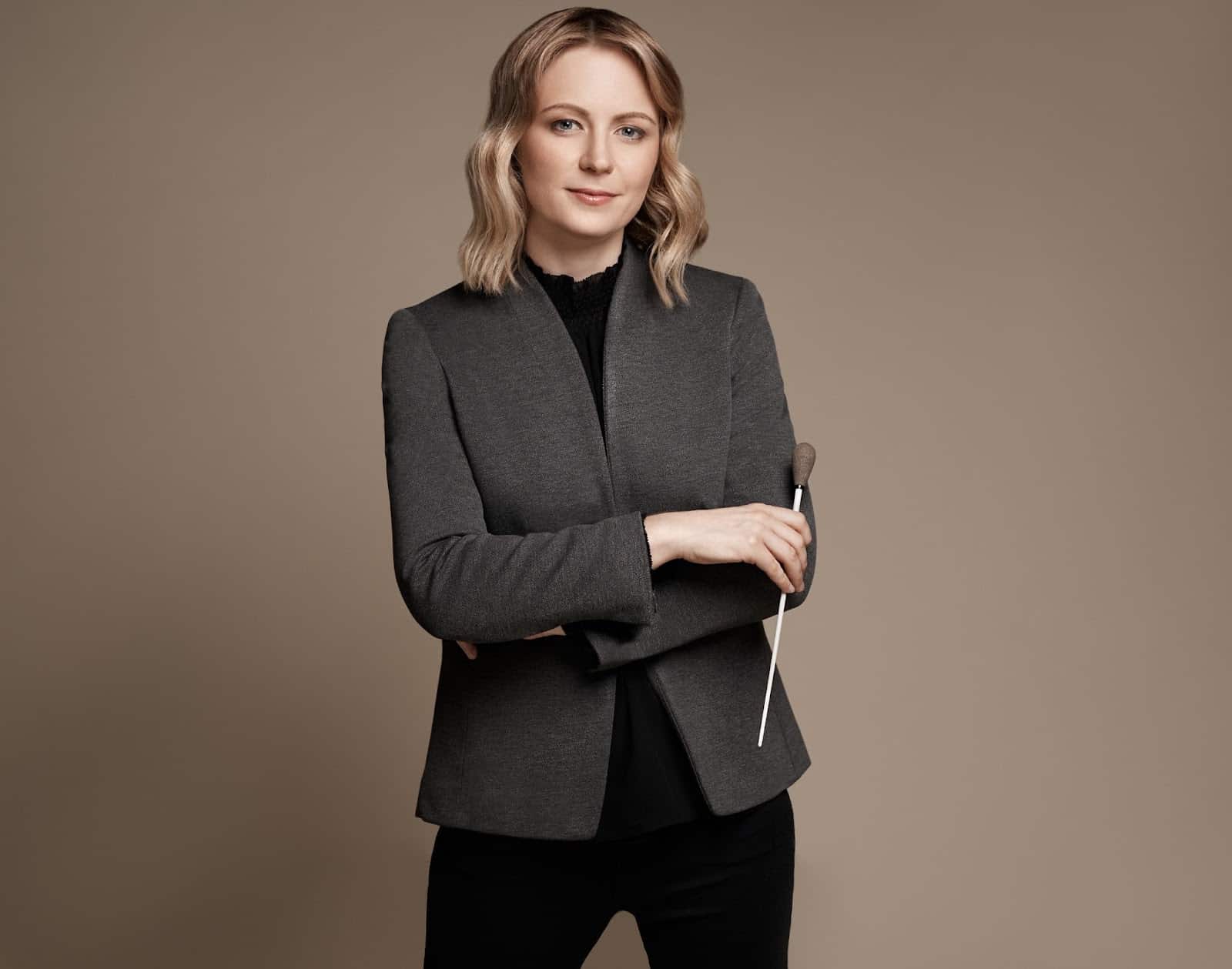Will I ever stop being a second violinist?
mainLaurie Niles has written a typically thoughtful reflection, describing what she calls ‘the toxic inferiority complex of the second violinist.’
She writes of a deeply ingrained mentality that many of us acquire, whether we want to or not, through years of a schooling system that emphasizes competition and hierarchy. It goes something this: the first violins are superior to the second violins. The seating is built on a competitive ranking system, and everyone is placed in order of ability, as the instructor or conductor views it. The best player is in the front, the worst player is in the back. The instructor may get this right, maybe not. People spend a lot of time looking around, assessing: is the person next to me better, or worse, and by how much?
Is there a remedy?
Read on here.






And that’s why it would be much better for orchestras to have the violinists play 1st and 2nd alternating…
Like some very successful string quartets are doing it.
Not necessarily: orchestras are not quartets.
Being a second violinist is simply a different skill set. Very often, the 2nds will set the tempo of a piece or, as in Mozart’s ‘Magic Flute’ Overture, start the fugal passage at the beginning of the Allegro.
Often, as in Brahms, the first and seconds will be playing in Octaves so the seconds HAVE to be in tune or the first can just pack up and go home!
The second violin section is the often described as the ‘motor’ of the Orchestra so a finely honed sense of rhythm is essential. In a first class symphony orchestra, the second violinists will be capable of playing the most difficult concerti.
Yes!
“Often, as in Brahms, the first and seconds will be playing in Octaves so the seconds HAVE to be in tune or the first[s] can just pack up and go home!”
Or, to look at it another way: the second violins are often more in tune than the firsts (IMHO this is partly because they are playing an octave lower, and partly because they have trained themselves to be listeners*). In my orchestra, the conductor sometimes addresses intonation problems in the 1st violins by asking the 2nds to play a little louder, “so the firsts will have something to listen [i.e., tune] to.”
*not necessarily a slam on 1st violinists. They are usually given the “solo” line and are required, by both the conductor and the composer, to play it accordingly. It’s difficult to be sensitive and listen when you’re constantly being exhorted to crank out your maximum volume of sound.
i agree so much with what you say. but i must add the moments where the 2nds set the tempo are (in mozart) very few and far between.i can count them on 2 hands. if the section is not cultivated as a team player environment, it can all erode. i mean donizetti and bellini can basically make you comatose IF you are not willing to find the little moments, the wonderful harmonies, the connections. and run with them and love them.
What a ridiculous comment. From a non player? Different skill set, (and mentality!) but should be able to interchange between sections as in the top orchestras.
All roles in the orchestra are important, aren’t they?
I believe that Mahler sometimes placed special onus on 2nd violins. I appreciate them anyway!
Also, on the issue of individual comparison, I notice that many orchestras vary each player’s place at different benches nowadays.
The Mahler 9th 2nd violin part is beautiful, difficult, and very very exposed.
Thanks Mary, a beautiful example indeed.
Yes – this can be a very pressing, seemingly irresolvable issue (both for 1st and 2nd violinist – for different reasons). All parts in an orchestra or quartet are fun to play, for all kinds of reasons. I also teach viola to all of my violin students. For example – I am currently second violin in a quartet – that was the open position (actually it could have been viola too, and I applied for both). I get all of the perks – fabulous repertoire, travel, equal pay, and I have a bit less stress. This allows me to also have lots of other projects – writing, subbing as concertmaster, playing trio concerts, and being a good mom. It was a terrific balance for me. When I had the chance to sub with Berlin Phil, I said I would love to be last chair viola. That’s where the fun is! Squished between basses, violas and Celli. Plenty of chances to look around and enjoy the scenery. Not that I couldn’t do other jobs, but each job has a special feel, and there is the right time in your life for every one of them. I guess, in the end, the variety is what keeps us all healthy. When I teach string quartets, l like to rename them after vegetables or something instead – like Broccoli and Turnip violins. Just to avoid the 1/2 snafu.
I, and I think most of us, first encountered this in youth & school orchestra as kids. As one of the commenters on the violinist.com article pointed out, the firsts are those ranked, say, 1-20 from the audition, and the seconds are those ranked 21-40. So the principal second is assumed to be not quite as good as the last-chair first violin. This practice may or may not continue in college. In a conservatory, I think the attitude starts to thin out a bit as people get rotated between sections on a regular basis and obviously not based on merit. (Also, many conservatory students had wonderful teachers in high school who were fabulous violinists and played in the middle of the second violins in their hometown orchestra…. which may have had a subpar concertmaster.)
In a professional orchestra, jobs that are not principal or titled (e.g. concertmaster, Associate Concertmaster, Assistant Concertmaster, etc) are simply called “section” or “tutti.” Many orchestras assign you a particular chair (e.g. 1st violin, chair 7) and you sit in the same seat for years. Some orchestras simply assign you to a section (e.g. first violin) and you rotate through the section (e.g. anywhere from chair 4 through whatever number is last chair). More rarely, orchestras will rotate players between the firsts and seconds.
When you get called for a free-lance gig, tell the contractor that ‘you only play first violin.’ It may take a while for them to get the message but it’s one way to handle the issue.
That’s an excellent way to make sure the contractor stops calling you entirely. A gig is a gig.
Speaking as a lifelong 2nd — in orchestras from grade school through and after college — we would suffer far less from any thoughts of inferiority if we were placed where we should be: opposite the firsts. This was where we were regularly stationed throughout the 19th century and for at least the first quarter of the 20th (with some conductors carrying the flag well into mid-century). IF the 2nds are strong and united this is a FAR superior arrangement to any other placement. Unison and octave passages regularly cited as supporting an all-left seating actually sound better with divided violins — you get a luxurious wall-of-violins effect optimized for the best seats in a shoebox concert hall (see Mahler’s description of this in Bauer-Lechner’s book).
You can add to this that comosers from Berlioz through Strauss specified the precise number of violins necessary in each section, with the usual result being that equal numbers of 1sts and 2nds are required, something regularly violated even in performances with split violins.
I note with some glee the number of younger maestros adopting the “old” string seating plan on a regular basis. It is almost always sonically and musically superior.
The seating of 1st and 2nd violins are one of those problems which can only be solved by compromise. Because when the 2nd violins are seated right, their instruments are projecting backwards and not into the audience which means some loss of sound and intensity, and ensemble playing is really less secure and puts an extra strain on the players. Also some works ask for this or that seating, like the beginning of the Pathétique which is obviously meant for left / right seating, but in Schumann IV there are passages where the strings take-over the same figure in imitation from vl 1 to vl 2 to violas to celli which sounds best if the groups are sitting next to each other so that they ‘take over’ the figure quite naturally.
Good point, but you probably mean the beginning of Pathetique’s final movement.
Yes, seating seconds next to firsts makes it easier for both sections to play certain passages, but separating them in fine orchestras can be conducive to producing better musical results in many instances.
Yes, if you’re 2nd Violin, you’re not as good as the 1st Violin. If you’re the 3rd Flute, you’re not as good as the 1st Flute, and there’s nothing wrong with that. If you’re not happy and think you deserve a better position, then re-audition or make your case to the director/board.
That’s not how it works in professional orchestras. Amateur or student bands maybe.
When we first rehearsed a contemporary piece several years ago, I (a flute player) was sitting with my head down, listening, since I didn’t have anything to play for a long time. I heard a solo for 2 violins and thought “Wow, Mr. A and Mr. B [our CM and ACM] must have really been practicing lately — I’ve never heard them sound this good!” Something about where the sound was coming from seemed weird, though, so I looked up and it was actually a solo written for THE LAST DESK. The better-than-concertmaster playing was coming from chairs 11 and 12.
(I think it may have been Schwantner, “A Sudden Rainbow”? Does a last-desk solo sound familiar to anyone?)
The concertmaster and associate concertmaster have long since retired. Chairs 11 and 12 are still there, grinding away in [apparently] happy anonymity.
Also, it’s interesting that such a clueless comment as Myrtar’s got so many upvotes. Maybe there are a lot of people out there who think professional orchestras work the way school orchestras do?
Interesting anecdote Bruce, and like you I am surprised by the Myrtar comment as violin sections just don’t pan out like that.
Mind you it’s the flute players that you have to watch! 🙂
No, it means that you won the audition for that seat. Timothy Day, the principal flute of the San Francisco Symphony, was previously the assistant principal. Eugene Izotov, principal oboe, was the assistant principal of the SFS before he became the principal of the Chicago Symphony, an orchestra which, historically, has a higher pedigree.
You’ve never actually even met anyone in a professional orchestra, right? That isn’t how it works.
That is simply not true: I know many orchestral violinists, and some of the seconds are definitely better than some of the firsts.
Jobs come up when they come up. There are so few vacancies and such stiff competition, not many can be sniffy about playing 1st or 2nd violin. Getting a job in a professional orchestra is really, really difficult. A job’s a job.
Of course it is possible that the person or group or committee that decides on placement within a given orchestra is biased, or ill-equipped to judge talent. But when all the smoke is cleared, it is still a matter of judging art, a task which is fraught with peril.
And sitting a player here rather than there (inside versus outside, fourth desk rather than fifth) can surely be and indeed almost has to be arbitrary. Which does not make it unfair or downright wrong, although it can be those things. Fritz Kreisler could not get accepted when he auditioned for an orchestral position as a young man; Joseph Silverstein was initially placed in a back stand but progressed forward like a rocket. And being suited to play in an orchestra is not always the same thing as being a splendid string player — Erich Leinsdorf’s autobiography has some harsh but plausible things to say about Tossy Spivakovsky as concertmaster, things which have nothing to do with Spivakovsky’s brilliant abilities as a violinist, brilliance which indeed had little to do with sounding like someone who would even wish to blend in with others.
Injustice can occur but by and large I have to assume or bet that the placement of most violinists in most orchestras has some basis in technique or tone or sight reading ability or some other factor that goes into what we call talent. Clearly some players are better than others, in almost infinite gradations: can we all agree on that? And that on balance, the better violin players in an orchestra are indeed in the first violin section, with the exception one would hope of the first desk or two of seconds, who presumably are better players than the last desk or two of firsts.
A second who longs to play first is not without recourse.
I’ve been there. Sure it hurts. Many truths hurt.
The first day on the job you look around and realize all that isn’t true. Just get on with it and refuse the baggage.
She definitely has a point that, important as they may be musically, the second violins are perceived as subordinate to the first. Examples abound. Off the top of my head:
– Jonathan Crow went from Second violin section leader to associate concertmaster with the OSM. If the sections were equal, shouldn’t he have preferred staying as section leader?
– In French, “jouer les seconds violons” is an actual expression which means, essentially, being the assistant or inferior partner to someone.
– Just the names ‘first’ and ‘second’ imply a hierarchy.
– Orchestras typically have more first violinists than seconds (at the OSM, typically 16/14). Now, that is very likely just a question of sound balance, but doesn’t it still suggest that one line is more significant than the other?
So, as Niles says (at least for those who read the article) being a second violinist is a different skill, and just as essential as the first violins. Yet, in the way they are talked about, it is not unsurprising that there is a wide perception that one should prefer being the ‘first’ violinist.
It is absolutely necessary that in an orchestra there are as many second violins as there are first violins.
The key words here are “perceived” and “perception”.
1. It must have been his personal preference, but there are plenty of cases when good violinists move in the opposite direction.
2. That expression is another fine illustration of a common misunderstanding.
3. Not exactly. Such numbering simply indicates the order of their lines in a score. Piccolo is not necessarily the most important instrument in an orchestra and double basses are not necessarily the least important section.
4. No it does not. It may be a practical way of solving the problem of comparative attendance inequality or possibly even a compensation for power imbalance. In most cases, when composers specify players’ counts, they indicate equal numbers for both violin sections.
We say “second fiddle” in english to mean the same thing. Interesting.
well i clicked on it because the excerpt made me curious. if one reads the entire article, there is nuance and sympathy and good advice in it. THAT SAID, orchestras hire vacant positions based on well, where the vacancy is. i learned more leading the 2nds of a major orchestra for years than i ever would have learned (or did learn) playing tutti firsts. and that is what is boils down to: tutti is tutti. there are equally frustrated tutti firsts as there are seconds. ( and equally happy ones as well.) there is no pay differential. if there is a complex, it is with those who lead seconds who kinda want to play the concertmaster solos. and if that’s your case, practice and audition for such a job!
In my (professional opera) orchestra the 1st violins are simply dreadful and the 2nd violin section far superior, according to the much of the rest of orchestra (apart from the 1sts!) 🙂
Best is to play the music upside down.
When orchestras such as the LSO, Cleveland and Philly have such tremendous 2nds, why fret. Their players are among star sections.
First-world problems . . .
No, they have the same vl 1 – vl 2 problems in Myanmar.
Since leaders of first violins are traditionally given more important responsibilities than those of any other string players, it makes sense to have finest musicians among violinists in such positions. However, the farther you look back into sections, the more equal you shall find the quality of the musicianship, so that some of the seconds being better than some of the firsts is not a rare occurrence at all.
For each top-level quartet with “switch-hitting” violinists, there are probably ten or more such groups whose violinists are not pretending to be “ambidextrous” – and this is no accident. In orchestras, most of the firsts would not like alternating at all, and many seconds would be against it as well. There is no evidence that alternating between sections improves the quality of a good orchestra.